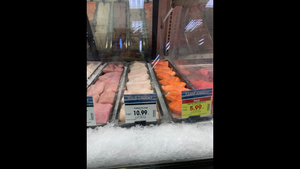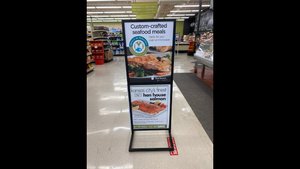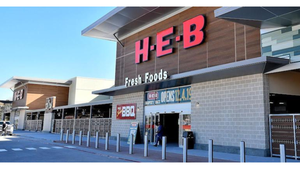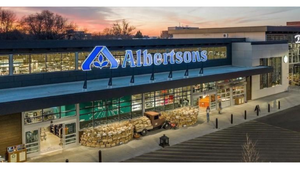Safety First 2010
When Supervalu acquired major chunks of Albertsons in January 2006, then Chief Executive Officer Jeff Noddle told analysts that the deal would be successful because we will be sharing best practices and there won't be one size fits all. He expected the integration of the two companies to take place at a very measured pace over three years. One of the areas in which Supervalu and the acquired Albertsons
February 22, 2010
MICHAEL GARRY
When Supervalu acquired major chunks of Albertsons in January 2006, then Chief Executive Officer Jeff Noddle told analysts that the deal would be successful because “we will be sharing best practices and there won't be one size fits all.” He expected the integration of the two companies to take place at “a very measured pace over three years.”
One of the areas in which Supervalu and the acquired Albertsons operation have shared best practices is employee safety. They focused on safety practices in distribution centers — the most injury-prone part of the food retailing business, where workers are constantly moving heavy loads.
“What we did was analyze how they treated [injury] risk and how we treated risk,” said James Koskan, corporate director of risk control for Minneapolis-based Supervalu, who talked about the project earlier this month in Phoenix at the Supply Chain Conference, sponsored by the FMI-GMA Trading Partner Alliance.
While employee safety may not have been the most closely watched aspect of the Supervalu-Albertsons integration, Koskan emphasized its importance. “The safety area sometimes gets pigeonholed into a small area of impact,” he said. “But employee injuries are going to have an impact on workers' compensation expenses and insurance premiums. And you can't be efficient if you have a lot of injury junk going on in your facilities.”
In his presentation, Koskan referred to Albertsons only as “the acquired company,” though it was clear that he meant Albertsons. He described it as “a large organization, almost the same size as us” that was acquired about 3½ years ago. Supervalu closed on the Albertsons acquisition in June 2006, adding 1,124 stores to its existing stable of 1,381 stores. Supervalu also acquired 12 distribution centers in the original transaction.
In its analysis, Supervalu found that the two companies had very different approaches to risk management. For the most part, Supervalu changed Albertsons' practices to match its own. As a result of the changes, the gap in safety performance between the two companies, which began at 164%, dropped to 35%, said Koskan.
DEPARTMENT DIFFERENCES
Among the myriad ways Supervalu and Albertsons differed was their departmental structure. Albertsons set up its risk management department to comprise the claims and financing functions but not safety, which was in the operations area. By contrast, Supervalu's risk management department included safety, claims and financial functions together.
Supervalu, Koskan said, wanted safety housed in the risk management department because it believes that the safety area has to incorporate the “cost consequences of injuries,” which can't be done without working with the claims component. That enables the company “to push the dollar consequences to operators so they understand the connection between injury and cost,” he said.
Supervalu was able to keep safety separate from operations because the risk management department “had a dialogue with operations,” said Koskan. But he acknowledged that Supervalu eventually realized it “had all our eggs in the financial basket” and changed the structure so that the safety function also became part of operations. In that way Supervalu benefited from Albertsons' model.
Beyond departmental structure, Supervalu and the acquired Albertsons operation went through 40 risk prevention areas at each company and rated them on a scale of one to five.
Here is a summary of what they found:
Albertsons hired an outside contractor to handle claims processing, but didn't closely oversee the contractor, Koskan said.
Albertsons developed safety protocols at its home office and applied them uniformly across its distribution centers. Supervalu, on the other hand, created high-level requirements but the details for each facility “were based on the specific problems at that location,” said Koskan.
At Albertsons, injury expense allocation was determined by payroll. “So the best way to control injury costs was to contract out labor,” said Koskan. “There was no connection between injury costs and how effective you were in preventing injuries.”
Supervalu emphasized risk management incentives in the performance review process for facility supervisors more than Albertsons did.
Supervalu developed its own loss-control management evaluation (LCME), an audit of safety management practices; Albertsons did not have a system like this.
Supervalu had a test of an employee's physical strength and endurance and required employees to pass a certain threshold to be employed in certain positions. Albertsons did not have this test.
FOUR INITIATIVES
Following its review, Supervalu decided to focus on four areas of change throughout the integrated company: audits, cost allocation, management training and reviews of outside administrators.
Supervalu implemented a third-party risk-management audit of its facilities (every 18 months) and Albertsons' facilities (annually). The audit looks at a manager's performance review to see whether there are objectives related to the risk category. It also considers whether a risk control manager attends staff meetings and whether transferred employees are trained on risk factors. In addition, the auditor separately surveys the management team and employees about risk issues such as training to see how closely the two groups are aligned.
Supervalu also uses its own LCME audit to develop action plans and accountability measures for managers.
For third-party administrators handling claims over $20,000, Supervalu's corporate office provides direct oversight. “Our home office has as much expertise or more than the claims adjusters,” said Koskan.
Koskan regards the allocation of injury-related costs — the financial accountability model — “the single most important component of any safety system.” Without this component, he said, “the rest of the stuff happens or doesn't happen by accident.” In effect, this process allocates costs for injuries to facilities based on their success in preventing injuries.
Every four weeks, Supervalu splits financial accountability for employee injuries into three pieces: a “premium bucket” (5% of the total) charged to every location regardless of their injury rate to pay for the program. Then facilities are charged for both their frequency of injuries and for the severity of injuries (dollar loss), with more emphasis put on frequency.
Facilities “look at these pieces and get a good idea of how they can control their injury costs,” said Koskan.
Supervalu also focused on training on-site managers, with the aim of “converting safety managers to risk control managers,” said Koskan. Safety managers are taught about the claims processing part of the business, such as electronic reporting of injury information and follow-up investigations, and are given access to claims data.
Supervalu determined that onsite medical treatment should be available at each facility. “You can treat minor injuries and keep employees in-house rather than sending them to a physician's office at a cost of $200-$400 per visit,” said Koskan. “On-site medical treatment helps provide claims administration with better information and helps get employees back to work.”
Koskan also stressed the importance of a safety culture that was not punitive but based on positive reinforcement. Supervalu uses a “structured program of positive reinforcement,” showing employees “the positive consequences of doing something right,” he said. This system, he added, is based on the book “Bringing Out the Best in People,” by management consultant Aubrey Daniels.
At one facility where Supervalu implemented its positive reinforcement principles between 1998 and 2005, the injury rate was cut to zero for a period of time and has remained low. Moreover, throughput at this facility increased as well.
Since the purchase date, Supervalu has tracked the safety performance of the acquired Albertsons facilities; the data indicates that its risk management reforms have paid off:
In days lost to injuries per 200,000 hours, the Albertsons facilities started at 332 and dropped to 137; Supervalu facilities are at 46.
In the three years prior to being acquired, Albertsons' average annual injury expense was four times that of Supervalu; post acquisition, it declined to 2.6 times higher.
During the prior period, the number of large claims (over $250,000) was 12 to 13 times that of Supervalu; it has dipped to half that level.
Incurred injury expenses have fallen 25% while “raw claim counts” dropped 38%.
“This is real data, not conjecture,” said Koskan. “It happened because of these initiatives.”
About the Author
You May Also Like






